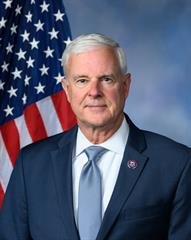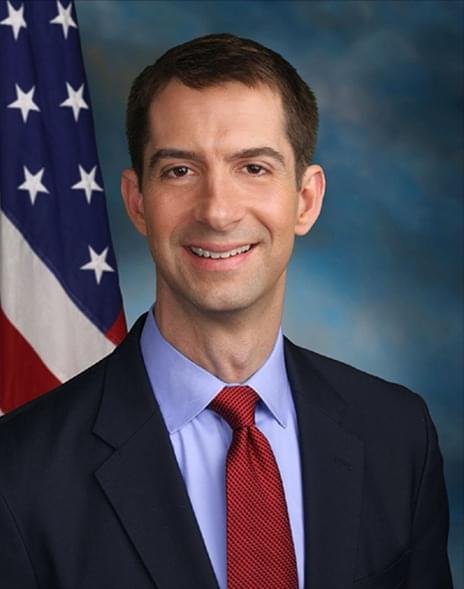Extension, part of the University of Arkansas System Division of Agriculture, recognized employees for their work and other examples of excellence. Winners were announced Dec. 4 during the service’s annual employee conference at the state office in Little Rock.
Bob Scott, extension director, commended this year’s winners for their dedication and commitment to the Division of Agriculture’s mission of strengthening agriculture, communities and families by connecting trusted research to the adoption of best practices.
“This is one of my favorite times of year when we recognize our folks who have excelled in their areas,” Scott said.
This year’s winners, who were nominated and selected by their peers, include the following:
Employee of the Year – Phyllis Scurlock
Phyllis Scurlock, an administrative specialist for 4-H, was named Extension Employee of the Year. Scurlock started her career with extension’s federal credit union in 2015 and then worked for Animal Science before moving into her current role at the C.A. Vines Arkansas 4-H Center.
“I’m so honored to work for UADA and with dedicated coworkers that are like none I’ve ever worked with,” Scurlock said. “I truly love my job. I love extension.”
Scurlock was the sole support staff member for the 4-H Programs Office at the Vines Center in 2022 and often did the work of two people while also training others, Scott said. In the past year, she handled the administrative needs for 176 groups that brought more than 6,200 people to the Vines Center.
“Phyllis is the beginning of their experience – why they book in the first place, and she is their last contact, and why they want to return,” her co-workers wrote in nominating her. “She is everything we strive to be in our organization.”
State Team Award — EFNEP Cooking Schools
The State Team Award recognizes a team that has addressed an issue affecting Arkansas families. The Cooking Schools, developed by the Expanded Food and Nutrition Education Program (EFNEP) staff, help individuals, families and youth with limited resources get the knowledge and skills they need to maintain nutritionally sound diets and increase physical activity.
The team includes Josh Phelps, Keith Statham-Cleek, Katie Reid, Cynthia Martin, Vivian Okanume, Cathy Love, Jacqueline Silva and Kierra Mendez-Ward.
“We took a hands-on approach to helping people learn about nutrition education, and we have a large interest from others in adopting it,” EFNEP instructor Statham-Cleek said.
The team piloted the Cooking School in Crawford, Van Buren and Benton counties, and 21 adults with limited resources have graduated from the program.
“The success of the pilot programs has resulted in the adoption of the cooking school model as a delivery method for EFNEP across Arkansas and has received regional and national attention,” Scott said.
Early Career Award for County Extension Faculty — Blake Erbach
As Perry County's agriculture and 4-H agent and staff chair, Blake Erbach has made a big impact in just two years.
“Blake’s desire to offer strong educational programs for his producers was shown within the first six months,” Scott said. “In a short time, he developed relationships with the county Cattlemen’s Association, the county Farm Bureau, First Electric Cooperative, Quorum Court members and other elected officials to secure financial support for county 4-H and agriculture programs.”
As a result of Blake’s work to strengthen the county 4-H program, enrollment in 4-H increased from 40 to 150 members.
“It’s been challenging, and it’s been a learning curve,” Erbach said. “Every day in extension is different, and I’ve loved all of it.”
Early Career Award for State Extension Faculty— Hunter Goodman
Hunter Goodman joined extension in 2021 as assistant professor for Community, Professional and Economic Development. She uses asset-based community development and consensus organizing as strategies for local community change. She focuses on building capacity across the state, particularly in the areas of nonprofit, workforce and community leadership for local development and resiliency. In two year, she has secured seven grants totaling more than $2.2 million.
“Dr. Goodman recognizes the importance of a systems approach to tackling issues for maximum impact,” Scott said. “This has led to partnerships with other faculty to create transdisciplinary programs.”
Examples include the extension Health Ambassador program, the Bank On Arkansas+ program to uplift the financial health and well-being of underbanked audiences and the Experiential Scholars Program, which promotes and develops extension educators and specialists.
Early Career Award for Program Technician/Associate — Ryan Keiffer
Ryan Keiffer is a program associate in the horticulture department’s Integrated Pest Management (IPM) program. He manages 10 research trials each year along with the IPM webpage, which includes an interactive pest scouting map. He also manages a horticulture pest trap network of 30-plus traps in conjunction with 10 county agents, and he helped manage two statewide horticulture demonstrations involving more than 30 agents each year.
“The diversity of projects and activities that Ryan has involved himself in and excelled at since he started exemplifies both initiative and excellence,” Scott said.
Early Career Award for Project / Program Administrator — Ben Aaron
Ben Aaron, extension videographer, works with faculty and staff to produce videos that show the impact of extension outreach through Agriculture, 4-H, Family & Consumer Sciences and Community Profession and Economic Development programs.
“Ben's efforts help our agents convey research-based information to their county clients and help position our agents as experts in their fields,” Scott said. “His work on Arkansas Home Grown and Homemade supports extension's partnership with Arkansas Farm Bureau in reaching shared audiences.”
County Team Award — Clark County Kid Chef Challenge
The Clark County Extension team of Amy Simpson, Cassidy Reeves, Cindy Ham and JoAnn Vann created the Kid Chef Challenge curriculum, which teaches youth healthy eating and cooking skills.
“During the contest, youth participate in educational activities designed to enhance understanding of healthy eating, increase cooking skills, and deepen their view of nutrition, agriculture, 4-H and career opportunities,” Scott said.
The program has helped participants adopt healthy eating behaviors, read labels to better select healthy foods and learn good food safety practices.
Scholarship Recipients
Three extension employees received scholarships to further their education and professional skills.
The Lynn R. Russell Endowed Award of Professional Excellence was awarded to 4-H STEM Instructor Hope Bragg, who is pursuing a doctorate degree.
The Mildred and Liz Childs Professional Development Fund Scholarship was awarded to two employees this year: White County FCS agent Katie Cullum, who is pursuing a doctorate degree at Texas Tech University, and to FCS Instructor Rebecca Simon, who is pursuing a doctorate in Agriculture Education, Communication and Technology at the University of Arkansas.
Service Milestones
Extension also recognized employees for years of service for five years of service and longer. Two employees were celebrated for 45 years of service: Patricia Doss, a network support specialist who works in Information Technology at the state office, and Burnita Hearne, administrative specialist in Crittenden County.
To learn about extension programs in Arkansas, contact your local Cooperative Extension Service agent or visit www.uaex.uada.edu. Follow us on X and Instagram at @AR_Extension. To learn more about Division of Agriculture research, visit the Arkansas Agricultural Experiment Station website: https://aaes.uada.edu. Follow on X at @ArkAgResearch. To learn more about the Division of Agriculture, visit https://uada.edu/. Follow us on X at @AgInArk.




















